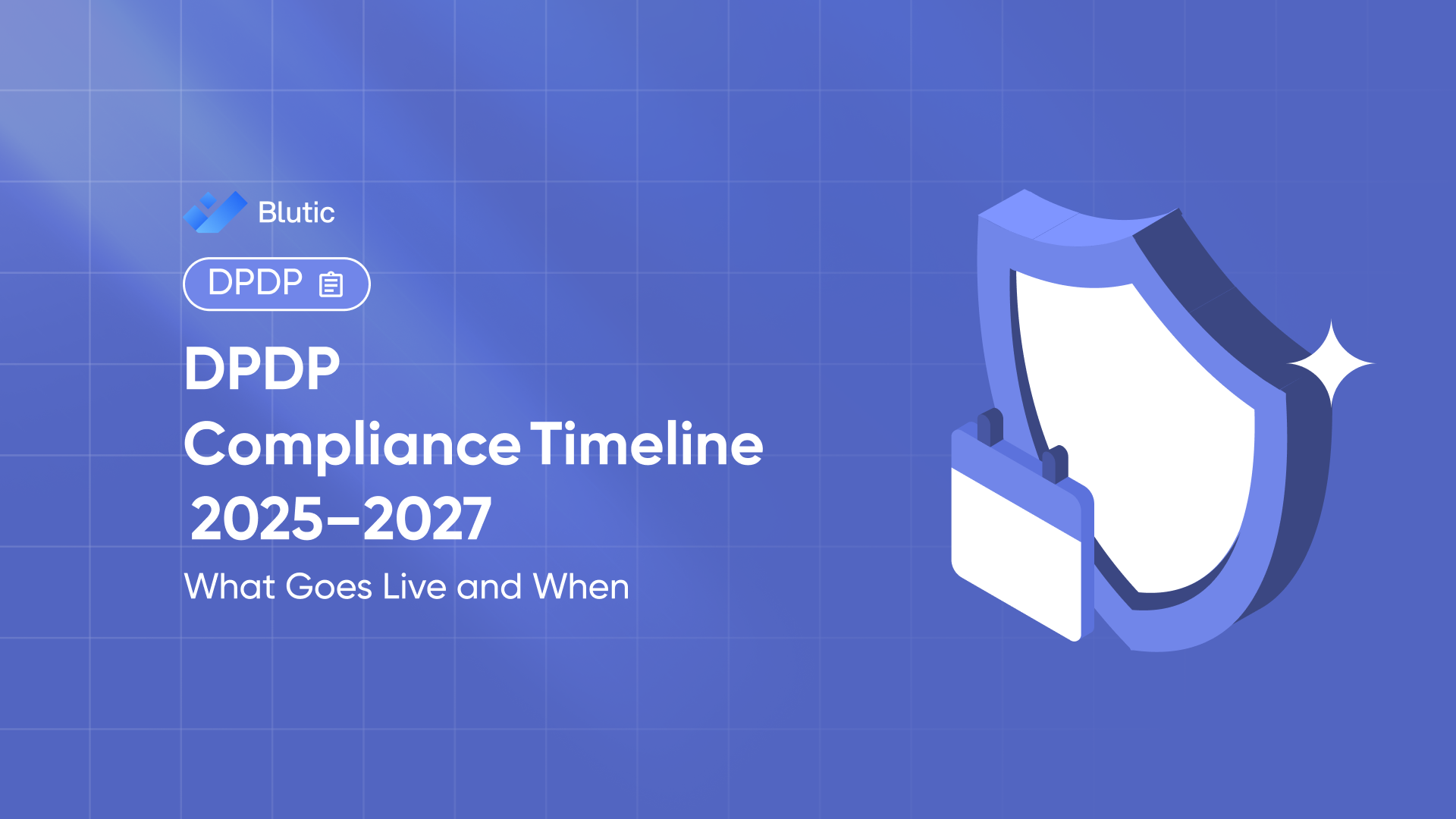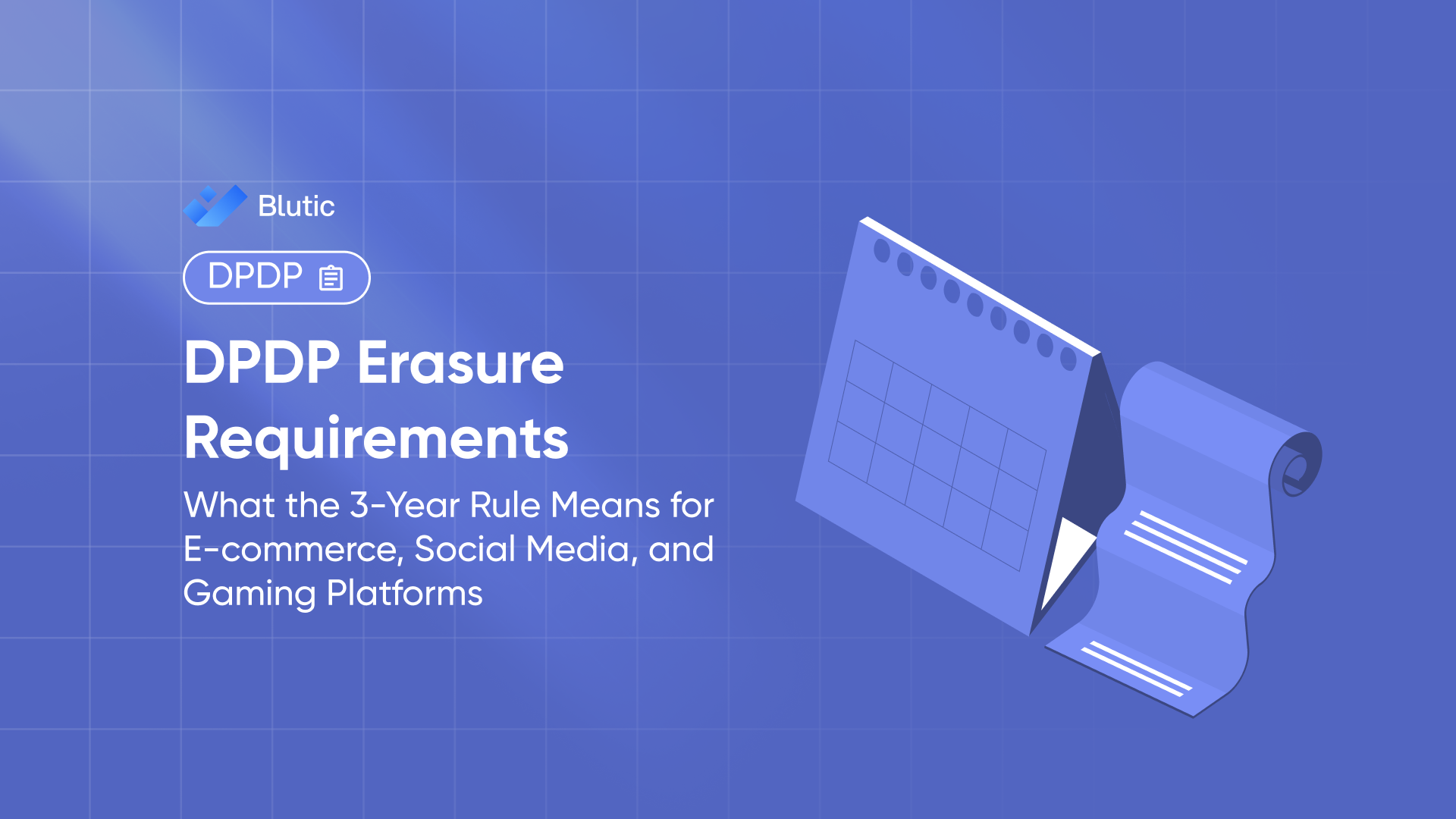DPDP Compliance Timeline 2025–2027: What Goes Live and When

DPDP Compliance Timeline 2025–2027: What Goes Live and When
Introduction
With the Digital Personal Data Protection Act, 2023 (DPDP Act) and the accompanying Digital Personal Data Protection Rules, 2025 now notified, Indian businesses must align their data practices to a clear schedule of compliance. The phased rollout provides a transition window, but the deadlines are firm, and non‑compliance carries serious risk. This blog breaks down what happens when, helping you stay ahead of each compliance milestone.
Why the Timeline Matters
The DPDP framework uses a staged implementation model: certain rules are in effect immediately; others take effect after 12 months, and the full regime becomes active about 18 months out. Understanding this structure helps you prioritize efforts, avoid last‑minute rushes, and ensure you meet each layer of obligations whether you're managing cookies, consent logs, or data retention.
Key Milestones You Should Know
Phase 1 – Immediate (November 13 2025)
On the date of Gazette notification, critical provisions come into force. These include:
- Rules 1, 2 and 17‑21 of the DPDP Rules (definitions, Board establishment, procedure) Bar and Bench - Indian Legal news+1
- Institutional frameworks such as the Data Protection Board of India being set up
- Basic obligations such as notice to Data Principals, initial definitions, and rule‑making authority
Phase 2 – After One Year (by November 13 2026)
This tranche triggers more operational obligations:
- Rule 4 (Registration and obligations of Consent Managers) takes effect.
- More extensive structures for consent manager frameworks, obligations of intermediaries
- Businesses must ensure platforms or interfaces for consent management are operational, and registration process begun
Phase 3 – After 18 Months (by May 13 2027)
The full backbone of the DPDP regime becomes active:
- Rules 3, 5 to 16, 22 and 23 (covering notice by fiduciaries, processing of personal data of children, cross‑border data transfer, rights of data principals, audit obligations of significant data fiduciaries) Bar and Bench - Indian Legal news+2Lakshmi Sri+2
- Data fiduciary obligations including consent capture, detailed logs, erasure rules, security safeguards
- The clock is now ticking for full compliance not just the initial pieces
What Your Business Should Be Doing at Each Stage
Immediately:
- Review and update your privacy notices, cookie banners, consent flows to reflect notice requirements.
- Set up logging and monitoring frameworks, plan for data breaches.
- Map out your data flows, categories of cookies, and identify which data relies on user consent.
Within 12 Months:
- Implement or integrate a consent management platform (such as Blutic) to support consent capture, withdrawal, and audit logs.
- Ensure registration or readiness for Consent Manager obligations if you serve as or rely on such services.
- Confirm vendor agreements and processor contracts include DPDP‑compliant terms.
By 18 Months (May 2027):
- Complete full rollout of all obligations: language‑specific notices, consent for children under 18, the erasure process, cross‑border transfer protocols, retention and logs for one year or more.
- Conduct internal audits, DPIAs for significant data fiduciaries, ensure board‑level oversight of data privacy.
- Prepare for enforcement and audit from the Data Protection Board.
A phased timeline gives businesses breathing room but only if they act now. Early preparation translates into stronger compliance, better user trust, and fewer surprises. With each phase comes more responsibility, and the full regime of the DPDP Act is just around the corner. Don’t wait until the final phase to begin start aligning today.
By leveraging tools like Blutic, businesses can implement necessary consent management and data‑privacy mechanisms in time for each milestone.
Frequently Asked Questions
More Blogs
Get the indise scoop: the latest tips, tricks, & product updates
%20.png)




